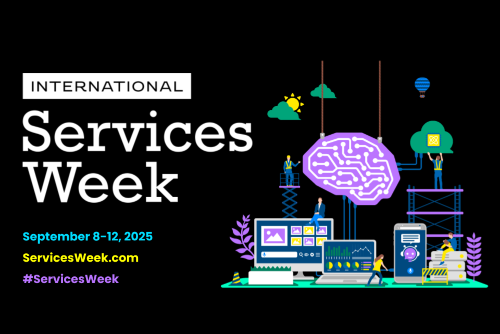Revenue recognition wrongs… and how to right them

Question: How important is it for you to correctly record revenue and have foresight into your expected revenue across the financial year?
That’s “revenue recognition,” a key component of revenue management, the lifeblood of any business. It provides a picture of the financial health of your company and ensures compliance with accounting standards and accurate financial reporting.
Sounds simple enough, right? But services businesses are all too familiar with how tricky revenue recognition can be, especially when relying on traditional spreadsheets or off-platform solutions. Companies that get it wrong suffer some nasty consequences: Their financial health will likely be misrepresented, leading to stiff penalties and poorly guided decision-making.
Financial health will likely be misrepresented, leading to stiff penalties and poorly guided decision-making.
The revenue recognition problem
Getting revenue recognition wrong—that is, doing it with conventional spreadsheets and manual processes—comes with some significant challenges.
One is multiple revenue streams. When you have disparate offerings, subscriptions, professional and business services, usage-based contracts, etc., it can be difficult to keep up with changes made to contracts. Trying to manually monitor when contractual performance obligations are satisfied for multiple revenue streams can be an overwhelming task for accounting teams. That can lead to countless hours of manual work and audit risk.
In addition to disparate revenue streams, there can be disparate systems. To recognize revenue accurately, finance teams must gather up orders, contracts, subscriptions, and invoices—but for many businesses, this information is kept in different systems. It gets worse: In many cases, each revenue team keeps track of their revenue information in their own spreadsheet, so teams must manually consolidate and input revenue data from various systems and spreadsheets. This leads to time-consuming, inefficient workarounds that are error-prone and not scalable.
Another challenge is limited visibility. Businesses that rely on manual revenue recognition processes, with multiple spreadsheets and messy calculations, forfeit transparency into where their revenue recognition stands. That leads to significant delays and inaccurate revenue forecasting—substantial impediments to strategic decision-making.
Solving the problem with revenue schedules
So what’s the solution to the above challenges? How do you improve revenue recognition? In a word, automation. An end-to-end automated revenue recognition solution enables you to track all revenue streams and scenarios using a single, unified tool.
For example, an automated solution can link contract revenue and costs to performance obligations and recognize revenue with ease, with no more confusing calculations. It can easily aggregate revenue source data from across the business and automate complex revenue calculations across multiple contracts and individual performance obligations.
Want to make that revenue recognition solution a true game-changer? Make sure it includes automated revenue schedules. These schedules provide forward-looking data, so you can:
- See how much revenue will be recognized over the lifetime of a source record
- Gain information about your company’s future revenue position without needing to run forecasting capabilities
- Manage cash flows and forecast future revenue with greater certainty
- Support multi-company, multi-geo, multi-currency requirements, saving time and minimizing errors
The five big benefits of revenue schedules
When you automate revenue recognition with an end-to-end solution that includes revenue schedules, your business gains five important advantages:
1.) You simplify the complex. An automated solution on a unified platform takes your process from complicated and complex to easy and secure. It streamlines your operations, minimizing the time and resources needed to record and report revenue, allowing finance teams and other employees to focus on more critical, value-added business activities. This efficiency can lead to cost savings and improved overall performance.
2.) You get compliant. Simple revenue recognition procedures can help your organization adhere to accounting standards and regulatory requirements, such as the International Financial Reporting Standards (IFRS) and Generally Accepted Accounting Principles (GAAP). This promotes transparency in financial reporting, making it easier for external auditors and regulators to assess your compliance with accounting rules.
3.) You reduce errors. Using spreadsheets and off-platform systems dramatically increases the chances of errors in recognizing revenue. Whether a simple mistype or an entire process, this could be a costly mistake. With revenue schedules, you gain better internal controls and straightforward, well-documented procedures that can help prevent duplicate entries and posting errors. So it becomes easier to establish and enforce controls that minimize the risk of manual errors and fraudulent activities.
It becomes easier to establish and enforce controls that minimize the risk of manual errors and fraudulent activities.
4.) You prevent discrepancies. With revenue scheduling, you can implement checks and balances to ensure that revenue recognition is consistent and accurate throughout the organization. Complex processes can be a breeding ground for reconciliations, adjustments, and manual errors; a simpler process can obviate the need for extensive reconciliations and their associated errors. This, in turn, contributes to more precise financial reporting and reduces the time and effort spent on reconciling discrepancies.
5.) You gain single-view visibility. Revenue scheduling enhances your ability to forecast future revenue streams. A unified platform gives you a single source of certainty to view and understand where you are in the recognition process, with flexible structures and easy-to-use UX. With this single-view visibility, you don’t have to review, compare, and contrast different spreadsheets; rather, you can quickly identify potential delays or errors, which is crucial for ensuring accurate financial reporting and compliance with accounting standards.
Righting revenue recognition wrongs
Looking to automate revenue recognition? Good. With a solution like Certinia’s Revenue Management software, you can accurately recognize any revenue stream, simplify the revenue recognition process, stay compliant, and minimize risk with a single revenue recognition solution.
Even better: Certinia’s solution includes revenue schedules that show you how much revenue will be recognized over the lifetime of a source record, so you can quickly and easily gain information about future revenue position, manage cash flows more effectively, and forecast future revenue with greater certainty.
Recent Articles
Maximize your Salesforce investment with Certinia






